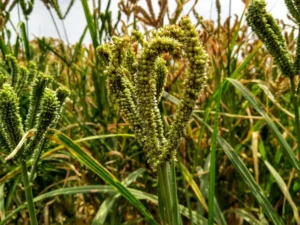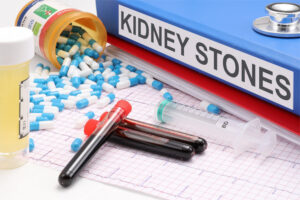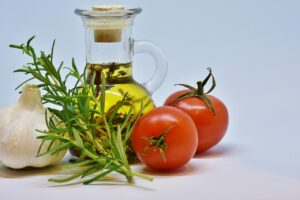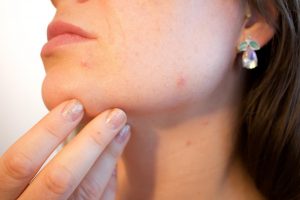What is Typhoid?
In many regions of the world, typhoid disease is a major issue. Headache, weariness, stomach pain, and diarrhoea are just a few of the possible adverse effects. Typhoid is an infectious disease caused by Salmonella bacteria that is more common during the rainy season. Typhoid is spread by eating or drinking food or water that has been contaminated by the faeces of an infected person.
Sweating, chills, headaches, body aches, abdominal pain from gastrointestinal issues, and a dry cough are all symptoms of typhoid fever. Then a high, persistent fever may appear, along with constipation or diarrhoea, as well as a loss of appetite. After that, you’ll feel weak and lose weight, which can linger for months at a time.
If you have any of these symptoms, you should consult a doctor right once. Nausea and a severe loss of appetite are also common side effects. It is, however, critical to eat small amounts of food at regular intervals in order to provide the body with the necessary strength and energy.
Typhoid patient diet should be of high-calorie foods. While dietary changes cannot cure the condition, and therapy usually entails the use of antibiotics, some dietary adjustments may help alleviate the disease’s symptoms.
Symptoms and the reasons to follow a Diet Chart
People with a weakened immune system are more susceptible to infection and are more likely to suffer severe consequences. Symptoms of the condition include stomach ulcers, diarrhoea or constipation, severe stomachaches, and haemorrhage. Typhoid fever diet charts should be carefully followed during typhoid therapy because they are an essential component of the treatment.
Typhoid patients frequently experience gastrointestinal discomforts, thus caution should be exercised when preparing food and selecting easy-to-digest foods. The main goal of this diet plan for typhoid patients is to strengthen the immune system. However, due to infection, our digestive system will not be able to function properly. As a result, you should select foods that are simple to digest while also providing adequate nutrition.
Diet Chart for a Typhoid Patient
What should be the diet in typhoid? How many days diets for typhoid? These are very serious and several questions. These healthy diets for typhoid are often recommended by doctors:
- Carbohydrate consumption should be increased. Porridge, soft rice, and baked potatoes are all foods that a typhoid sufferer should consume.
- Give the patient semi-solid meals because it is easier to digest. Boiling potatoes, khichdi, oatmeal, boiled rice, and yoghurt are semi-solid meals that can be consumed during typhoid.
- It’s also crucial to keep the body hydrated. Because deadly typhoid has a proclivity for causing extreme dehydration, it’s best to give the patient enough fruit juices, lassi, glucose water, lime juice, and coconut water. You might also feed him/her plenty of water-rich fruits as an alternative.
- A high-calorie diet is generally recommended as well. Foods like bananas and potatoes fall into this category.
- Milk and yoghurt consumption should be increased.
- Soups including spinach, vegetable, carrot, chicken, and mushroom soups can also be served.
- Make sure the patient has enough water to drink. Boiling and appropriate filtering of drinking water is required.
- You can also serve simple boiled yellow daal. Healthy typhoid foods include these.
- Ascertain that enough protein is consumed.
- Light, easy-to-digest meals should be consumed on a regular basis.
- Cooked veggies can be eaten to help the body recover from typhoid by providing essential nutrients. Potatoes, carrots, beets, raw papaya, and squash can all be eaten after they have been well cooked or boiled. They’re nutritious and easy to digest.
- Herbal teas with antibacterial characteristics, such as a blend of neem, yarrow, and sage steeped in water, can help you stay hydrated. While this dish is one of the healthiest foods for typhoid, it is not a substitute for medication. It can, however, be used in conjunction with your treatment as a supplement.
- While you’re suffering from typhoid fever, honey is a healthy approach to meet your sugar needs. It has been utilised in traditional medicine since ancient times and is both healthful and antimicrobial. Honey is also known to help the digestive system when ingested with warm water. Honey is one of the sweetest foods for typhoid fever since it helps speed up the recovery process.
Foods to avoid in Typhoid
- Fiber-dense foods should be avoided. Food with a high fibre content is difficult to digest and puts strain on the digestive system, which has already been compromised by typhoid. As a result, avoiding it during the illness can relieve some of the stress.
- Food that is spicy or fried is strictly prohibited. Foods that are spicy can irritate the bowel and digestive system. The disease already has an impact on the digestive tract, thus inflammation should be avoided at all costs.
- Foods that cause stomach bloating and gas should be avoided. Broccoli, cabbage, cauliflower, and asparagus are examples of vegetables that can produce gas and bloating. It is preferable to avoid putting stress on the digestive system.
- Limit your ghee and butter consumption. Fatty foods are more difficult to digest and can worsen typhoid symptoms.
- Dry fruits, while generally healthful, have a high fibre content. Fibre is beneficial under normal conditions, but not so much during typhoid. Similarly, due to their high fibre content, almonds, walnuts, and pistachios should be avoided or limited.
- Gassy stomach can be caused by legumes such as chickpeas, lentils, and kidney beans, however this isn’t a problem in most cases. However, if you have typhoid, you should avoid eating gassy meals since they may make you feel worse as you recover from your illness.
Points on which Seniors should take precautions:
Certain precautions can be taken to prevent typhoid fever in the elderly, or indeed in people of any age. It is, for example, advised that fruits and vegetables be thoroughly washed in clean water before being eaten or cooked. Drink RO filtered, boiled, or bottled water whenever possible, avoid visiting locations with poor sanitation, and wash your hands well before eating. Personal hygiene is also important, as is avoiding street vendors’ beverages and meals.
Some Frequently Asked Questions:
- Who can get Typhoid?
Typhoid fever is a disease that affects both children and adults. Typhoid fever can affect anyone, but travellers to areas where the disease is prevalent are at the greatest risk. Local outbreaks are occasionally linked to contact with a chronic carrier.
- What is the method of transmission of the virus?
Infected persons transfer typhoid germs through their faeces and, to a lesser extent, urine. The germs are spread through eating, drinking, or consuming foods that have been contaminated by the sick person’s excrement.
- What symptoms might you expect?
Fever, headache, constipation, diarrhoea, rose-colored patches on the trunk, and an enlarged spleen and liver are some of the symptoms that might be moderate or severe. It’s not uncommon to experience a relapse. With antibiotic treatment, fatalities are reduced to fewer than 1%.
While dietary adjustments alone will not cure typhoid, they may assist to alleviate the disease’s symptoms.So, typhoid fever diet is vital for a patient suffering from typhoid fever, do pay attention in their typhoid diet chart. It’s crucial to keep in mind that typhoid is a dangerous illness. Always tell your doctor about your symptoms and get competent medical advice on medication and food modifications.
All of the foods indicated above should not be used in place of medication for typhoid recovery. Typhoid fever diet chart is so much necessary for quick healing.
















